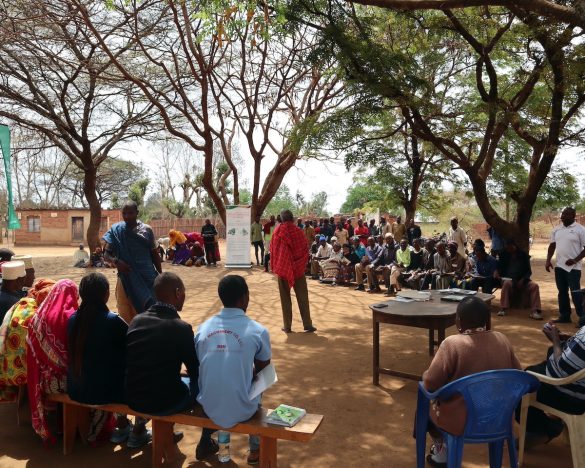Measuring the ‘sustainable’ in sustainable intensification – indicators needed!
How do we know if our interventions are indeed sustainable?
Peter Thorne, Africa RISING coordinator in Ethiopia, suggest this is one of the trickiest questions we face in Africa RISING:
To try and get some answers, Africa RISING partners and researchers with an interest in this topic will hold a side meeting during the November 2014 Africa RISING learning event and monitoring and evaluation meeting in Arusha. It will lay the groundwork for a symposium session entitled “Beyond Intensification: Measuring the ‘Sustainable’ in Sustainable Intensification” to be held at the annual meeting of the American Association for the Advancement of Science (AAAS) in February 2015.
See Peter Thorne presentation (more on this topic)
To develop useful indicators of sustainability in agricultural systems, we need to be clear what we mean by the term:
“[Sustainable development is] development that meets the needs of the present without compromising the ability of future generations to meet their own needs”
As proposed by the Brundtland Commission in 1987, this definition has been widely used to capture the essence of sustainability. This definition applies to sustainable development in general and neatly encapsulates the idea that any innovation has consequences beyond its immediate temporal domain (spatial issues are not addressed). To assess the sustainability of innovation in these terms, indicators must be identified to measure and account for these consequences. What issues are likely to be most important in determining the suitability of sustainability indicators in the context of sustainable agricultural intensification?
- Using the Brundtland definition as a starting point soon leads us into murky waters. The phrase “… not compromising the needs of future generations” immediately throws up the question of time-frames. How can we measure an effect that may not express itself for decades, centuries or even millennia? There are certainly no direct measurements to be taken in the short term so how can we identify appropriate proxies and integrate them into robust (but ultimately untestable) predictive models?
- On the basis of Merton’s Law of Unintended Consequences alone, achieving development without compromising the needs of future generations would also seem to be a tall order! The longer the time-frame, the more likely we are to see outcomes that were not the ones intended by the original, purposeful action; some of these will, inevitably, be negative. It would appear that we can only hope to minimize the adverse impacts of our current activities on the needs of future generations? Appropriate indicators probably, therefore, also need to a likely “degree” of sustainability and in ways that can compare effectively amongst alternative courses of action.
- In the opening years of the third millennium, agricultural innovation is aiming at a set of constantly moving targets. This is perhaps the most significant challenge to finding sustainable solutions. Innovation that works for a population density of 200 people per square km may not work, 20 years later, when each km hosts 300 or more people. Values of environmental parameters (mean temperatures, rainfall availability and distribution) are shifting rapidly, only partially predictably and, we hope, under the influence of mitigation measures (at multiple scales). How do we define the environmental sweet spots on which to target sustainable innovation and how does this affect the indicators that constitute our evidence base?
Our understanding of sustainability will always be based on imperfect knowledge so we must look for pragmatic measurements and interpretations. Perhaps, in the end, this pragmatism will lead us the conclusion that sustainability is too great a challenge and that we should be concentrating more on damage limitation? If we do accept this, our solutions may need to be, at least, subtly different.
Comments and insights welcome!




